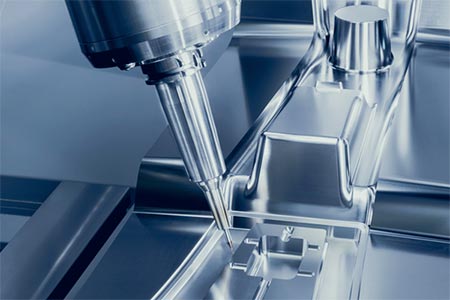What is the machining process for Aluminium?
Views: 757 Update date: Jun 13,2024
Machining aluminum involves several processes, each tailored to create specific shapes, dimensions, and surface finishes on aluminum workpieces. Here are the primary machining processes used for aluminum:1. Milling
Milling involves using rotating cutting tools to remove material from a workpiece. It can create a variety of shapes, including flat surfaces, slots, and complex contours.Machines Used: CNC mills, vertical and horizontal milling machines.
Key Points: High-speed machining is often used due to aluminum's softness, which allows for higher spindle speeds and feed rates.
2. Turning
Turning involves rotating the workpiece on a lathe while a cutting tool removes material to create cylindrical parts. It's used for making shafts, bushings, and other round components.Machines Used: CNC lathes, manual lathes.
Key Points: Single-point cutting tools are typically used, and turning can achieve fine surface finishes.
3. Drilling
Drilling creates holes in the workpiece. The process can be followed by reaming to refine hole dimensions and improve surface finish.Machines Used: Drill presses, CNC drilling machines.
Key Points: Proper lubrication and chip evacuation are important to prevent tool clogging and achieve accurate holes.

4. Grinding
Grinding involves using an abrasive wheel to remove material and achieve fine surface finishes and tight tolerances.Machines Used: Surface grinders, cylindrical grinders.
Key Points: Grinding can be used for both flat and cylindrical surfaces, and coolant is often required to manage heat.
5. Sawing
Sawing is used to cut aluminum into smaller pieces using a blade with teeth.Machines Used: Band saws, circular saws.
Key Points: Sawing is efficient for cutting large stock into manageable sizes, and blades specifically designed for aluminum are recommended.
6. Boring
Boring enlarges a hole that has already been drilled or cast, providing improved accuracy and surface finish.Machines Used: Boring mills, lathes.
Key Points: Precise alignment and proper tooling are crucial for achieving desired dimensions.
7. Reaming
Reaming is used to finish holes to exact dimensions and improve surface finish.Machines Used: Drill presses, CNC machines.
Key Points: Reaming is usually done after drilling to ensure precision.
8. Tapping
Tapping creates internal threads in a pre-drilled hole.Machines Used: Tapping machines, CNC machines with tapping attachments.
Key Points: Proper lubrication is essential to prevent tool breakage and achieve clean threads.
9. Broaching
Broaching involves using a toothed tool to remove material and create complex shapes, such as splines and keyways.Machines Used: Broaching machines.
Key Points: Broaching provides high precision and is used for internal and external features.
10. Honing
Honing is used to improve the geometric form and surface texture of a workpiece.Machines Used: Honing machines.
Key Points: Honing is typically employed to achieve very fine finishes and precise dimensions, particularly in cylindrical bores.
Best Practices in Aluminum Machining
Lubrication: Use appropriate coolants and lubricants to prevent aluminum from sticking to the tools and to manage heat.Tooling: Use tools made from materials such as carbide or diamond, which maintain sharpness and provide better finishes.
Speeds and Feeds: Optimize cutting speeds and feed rates to match the properties of aluminum, allowing for efficient material removal and prolonged tool life.
Chip Evacuation: Ensure proper chip removal mechanisms are in place to avoid clogging and maintain surface quality.
By selecting the appropriate machining process and adhering to best practices, manufacturers can achieve precise and high-quality results when working with aluminum.



